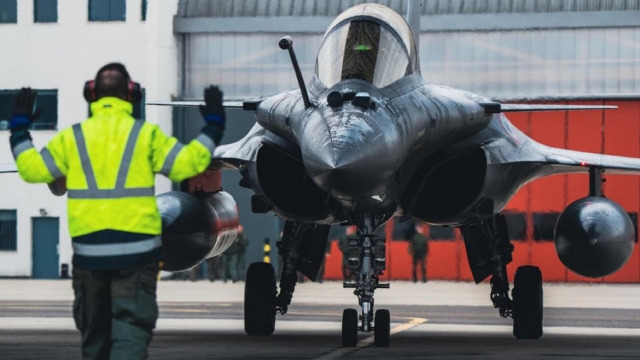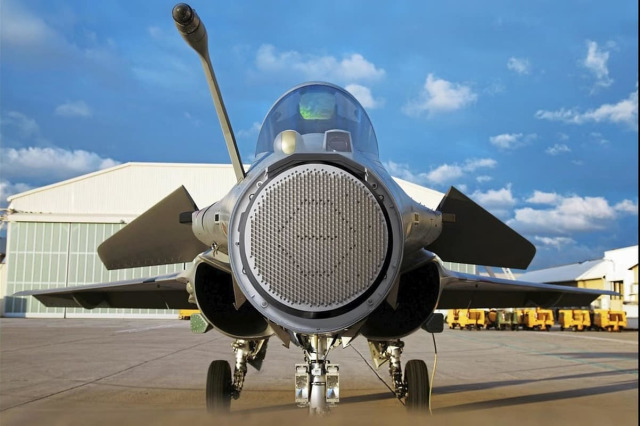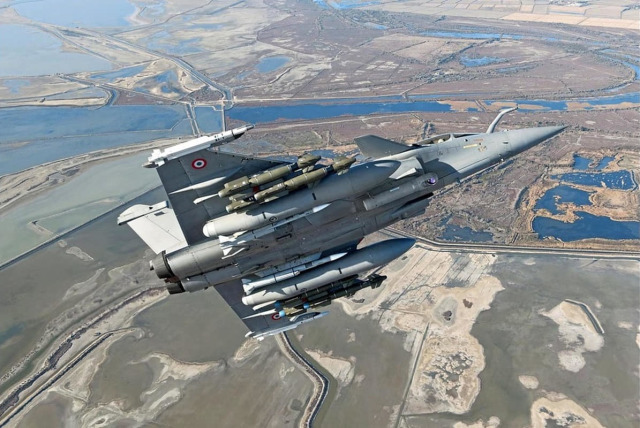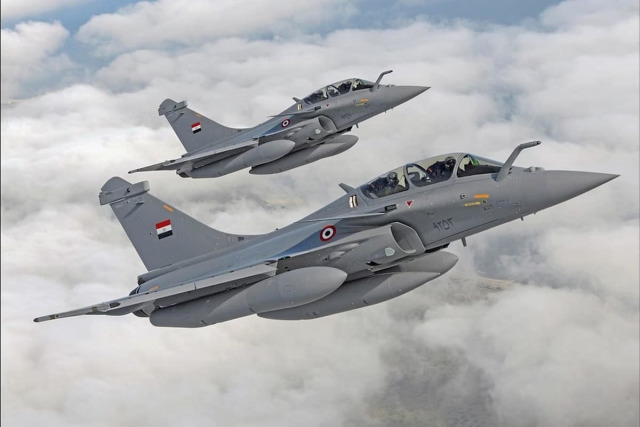According to the relevant media, the beginning of a large-scale re-equipment of the French Air Force is possible. At the end of March 2023, the General Directorate of Armaments of France (DGA) announced the approval of a new standard fighter "Rafale" (Rafale F4.1). However, the new aircraft of this series will be delivered by the manufacturer Dassault only in 2024. However, as the DGA additionally reported, in the coming years, all Rafale aircraft in service with the Air Force and Navy are planned to be upgraded from the current version of the F3R to F4.1.
The French government reportedly ordered the upgrade in January 2019. Tests of the Rafale with the appropriate equipment have been carried out at Dassault since 2021. The first two-seat Rafale 4.1, modified from the F3R version, arrived at the French Air Force Flight Test Center at Airbase 118 in Mont-de-Marsan in early March 2023. Soon the second plane arrived. Additional operational tests are planned in the coming months, including the first landings on the deck of the aircraft carrier Charles de Gaulle, scheduled for this spring.

At the beginning of March 2023, the first "Rafale" F4.1, arrived at the AvB Mont-de-Marsan of the French Air ForceWhat can the new "Rafale" F4.1 do?
According to experts, in the future, the Rafale F4.1 will become the best fighter in France, having received many new qualities that previous versions could not boast of. In 2019, the French government estimated the cost of capacity building at about 2 billion. euro.
During the modernization, the main focus was on updating the software and expanding integration capabilities. In particular, it is expected that, among other things, the aircraft will have the opportunity to interact with drones in the field and receive them "under its wing" as "faithful wingmen" . In addition, the focus was also on new types of weapons and self-defense functions. The following modifications correspond to the F4.1 standard:
- Network connectivity options. Since coordinated deployment has become the norm in international conditions, the Rafale F4 is a real "network aircraft" with an encrypted connection to the Syracuse IV satellite communication system, a new communication server and a digital radio. It has significantly improved the ability to collect, analyze and exchange data using communication channels that are as secure as possible from eavesdropping.
- The best radar. The proven RBE 2 AFAR radar from Thales has received a ground surface scanning mode (GMTI), which will help Rafale detect and track moving ground targets.

RBE 2 RADAR with AFARMore powerful sensors.
- The sensors of the aircraft have been upgraded to ensure its operability and survivability from new threats. The integrated SPECTRA self-defense system now guarantees protection against cyber attacks and has advanced jamming capabilities. The infrared guidance system (IRST) and the multispectral sensor in the front of the cabin (OFS) have been updated.
- Helmet display. In the future, Rafale F4 pilots will receive relevant information through the display of the Scorpion helmet from Thales. The built-in helmet display is designed to noticeably increase situational awareness of pilots and contribute to faster decision-making, which, in turn, should increase "operational efficiency".
- New weapons. The Rafale F4.1 is capable of carrying up to three AASM 1000 Hammer precision bombs weighing 1,000 kg. The GPS-guided bomb developed by Safran has been undergoing tests since 2020 and at the end of January 2023 received DGA approval for use with the Rafale F4.1. The aircraft will also receive a new guided air-to-air missile MICA NG manufactured by MBDA. To choose from, the ammunition is equipped with an infrared or radar GPS. However, MICA NG availability is expected only from 2026. The MBDA Meteor long-range air-to-air missile will also become part of the fighter's arsenal.

Armament of the Rafale fighterNew service modes.
- The Rafale F4 is equipped with a new forecasting and diagnostic system designed for "preventive maintenance". The goal is to recognize impending system failures in advance. In the future, it is expected that maintenance and repair will be more in the hands of industry. Further optimization actions using artificial intelligence and "big data" are planned.
According to the materials of the resource flugrevue.de

